Ever gotten a wedding invite with a packed schedule that seems to go on for days? That’s just a regular Indian wedding. Forget everything you know about one-day ceremonies—here, it’s a whole festival. Depending on the community or region, Indian weddings can stretch from a lively two-day affair to a marathon weeklong celebration. And it’s not just continuous rituals; you'll find bursts of music, food, games, and dance parties in-between the formal stuff.
The main reason these weddings are longer than most is tradition. Each event—like the mehendi (henna night), sangeet (music party), or haldi (turmeric ceremony)—serves its own purpose. And they’re not optional. Imagine marking every milestone with its own mini-party, all leading up to the actual wedding day. If you’re invited, block off your calendar in advance; leaving early means missing out on great food, funny family banter, and the kind of memories you can’t get at a regular ceremony.
- Setting the Stage: Pre-Wedding Events
- The Big Day(s): Main Ceremony & Celebrations
- After-Parties and Farewells
- Tips for Guests: What to Expect and Pack
Setting the Stage: Pre-Wedding Events
If you think the main ceremony is where the action starts at an Indian wedding, you’re missing a lot. The build-up is everything. These wedding traditions begin days before the actual vows, and honestly, that’s where the real bonding happens. Here’s what you’ll usually see before the wedding:
- Roka or Engagement: This is the first formal event, where families make it official. Sometimes it’s a small gathering, sometimes a huge party—depends how big the families want to go.
- Mehendi: Usually takes place two days before the wedding. All the women (and plenty of men) get henna applied on their hands. Look around and you’ll see tons of photoshoots happening alongside snacks and laughter.
- Sangeet: This is basically a massive pre-wedding concert the night before. Both sides of the family get together, perform dances, sing songs, and roast the couple a bit. It’s all about letting loose before things get formal.
- Haldi ceremony: Family and friends slather a paste of turmeric, sandalwood, and rosewater on the bride and groom. It’s believed to bring good luck and literally give that wedding day glow. Usually happens the morning of or a day before the wedding.
Some families throw in extra parties, like cocktails or welcome dinners, especially if guests are traveling in. Regional twists can add events like 'mandap muhurat' or 'chuda ceremony' if you’re at a Punjabi house, for example.
Wondering how much time all this takes? Most Indian weddings easily dedicate at least 2-3 days to these pre-wedding rituals alone. If you’re invited, pace yourself—this is just the beginning!
| Pre-Wedding Event | Typical Timing |
|---|---|
| Mehendi | 2 days before wedding |
| Sangeet | 1 day before wedding (evening) |
| Haldi | Morning of wedding or 1 day before |
The Big Day(s): Main Ceremony & Celebrations
The actual wedding day—or days, let’s be real—is where all the action happens. Most Indian weddings don’t just have a single ceremony. Depending on where the families are from, you might see a sequence of events stretching sunrise to way past midnight, packed with rituals, outfit changes, and feasts.
Hindu weddings are famous for their wedding length. The main event is the wedding ceremony (the 'shaadi' or 'vivah'), which kicks off with the baraat—where the groom makes his grand entrance, usually on a horse or even a decked-out car, surrounded by dancing family and loud music. This procession takes at least an hour and sometimes longer if everyone’s having fun. Once inside, the wedding rites start. You’ve probably heard of the seven circles around the fire (saat phere) and exchanges of garlands, which are big highlights. The full ceremony can run anywhere from 1.5 to 3 hours, especially if every tradition is followed to the letter.
For Sikh weddings, the Anand Karaj in the gurdwara runs a bit shorter—often around two hours total. Christian Indian weddings tend to be more in line with Western ceremonies, lasting an hour for the main service, but usually followed by a huge reception. Muslim Nikah ceremonies are sometimes the shortest, but even here, long parties and meal gatherings stretch things out. And let’s not forget, almost every style of Indian wedding ends with a blowout party: the reception. This part rivals a music festival, with hours of non-stop food, dance, and speeches.
Here’s what a typical Indian wedding ceremony lineup might look like:
- Baraat: The groom’s arrival party (1–2 hours)
- Main Ceremony: Marriage rites and rituals (1.5–3 hours for Hindu weddings; 1–2 hours for others)
- Reception: Food, performances, dancing (3–6 hours—sometimes longer!)
Just to give you an idea of how the timing shakes out, check this out:
| Event | Usual Duration |
|---|---|
| Baraat | 1–2 hours |
| Main Ceremony | 1.5–3 hours |
| Reception | 3–6 hours |
Don’t forget, people rarely follow this schedule to the second. If one ritual or the dinner runs over, everything gets bumped. And no one minds. As a guest, the smart move is to pace yourself: snack often, plan for several outfit swaps, and leave some energy for the afterparty.
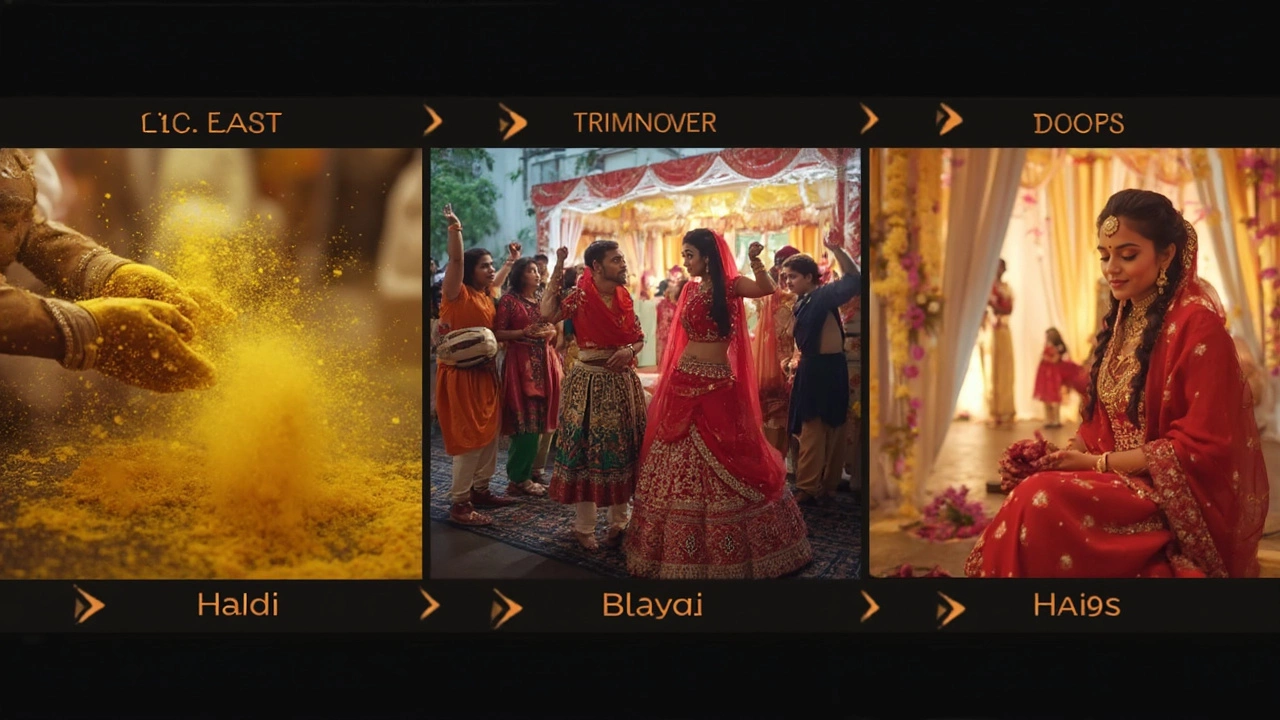
After-Parties and Farewells
Once the big day wraps up, you'd think the celebrations are over, but nope—Indian weddings often end with some pretty legendary after-parties. These events go way beyond a simple dinner. If you’re thinking about skipping out early, you’ll miss the next chapter of the fun.
Take the reception, for example. It’s usually held the night after the main wedding, and in many families, it’s as big as the wedding itself. People show up in fresh outfits, there’s a new round of speeches, a buffet spread, and a cake that could feed a small village. There are always more dance-offs—dads and aunts included.
Another tradition you’ll spot is the 'vidaai' or farewell ceremony. This part is especially emotional, with the bride saying goodbye to her family. It’s more than a ritual; it’s when reality kicks in and the crowd cheers (and often cries) as the newlyweds leave. A well-known Mumbai planner, Neha Shah, once said,
"The vidaai is really the heart of the wedding, because it’s not just a goodbye—it’s a new start, and no one ever leaves dry-eyed."
Many North Indian families also host a 'pag phera,' where the bride comes back to her childhood home a few days after the wedding—usually with her husband. It’s a homecoming, yes, but also another round of feasts and welcomes.
If you’re planning to attend, here’s what usually happens after the main event:
- Reception: Formal party, meet-and-greet for extended networks, big meal, and dance floor invasion.
- Vidaai: Send-off ceremony, sometimes paired with heartfelt songs and rituals. Expect those teary-eyed moments.
- Pag Phera: The bride’s first visit to her parents’ place post-marriage, with a welcome meal and gifts.
Don’t be surprised if you rack up almost as many hours here as during the ceremony. Across major cities in India, 82% of wedding receptions last longer than 4 hours, according to the 2023 India Wedding Industry Survey:
| Event | Average Duration (hours) |
|---|---|
| Reception | 4-6 |
| Vidaai | 1-2 |
| Pag Phera | 2-3 |
So, when you’re looking at your invite, remember: the end of the wedding isn’t actually the end. Plan for those after-parties—and maybe keep your tissue pack handy.
Tips for Guests: What to Expect and Pack
Showing up to an Indian wedding is a blast, but it’s even better if you come prepared. This isn’t your average weekend event, and it can be a marathon. Getting the basics down will help you enjoy each ceremony without worries.
- Dress code variety: There are different outfits for each event, so for the mehendi or haldi, think simple and comfy since you might get messy. Save your show-stopping outfit for the main wedding day or reception. Women often wear sarees or lehengas, while men go for kurta pajamas or sherwanis. If you’re not sure, it’s okay to ask the hosts.
- Gifts: It’s common to give cash envelopes (shagun) instead of boxed gifts at Indian weddings. The amount varies by your relationship to the couple, but something ending in "1" (like 101, 501) is believed to be lucky.
- Pacing yourself: With multi-day celebrations, plan rest between events. Bollywood dancing sounds fun until you realize breakfast starts at 8 am the next day. Hydration and snacks go a long way.
- Footwear: Easy on, easy off. You’ll be removing your shoes a lot entering ceremony spaces, so leave the strappy heels at home.
- Be early, but also expect late starts: Most wedding rituals run on "Indian Standard Time"—meaning things rarely start on the dot. Use the extra time to mingle or check out the food.
Packing is its own project. Here’s a quick table to break it down by event:
| Event | Suggested Outfit | Essentials |
|---|---|---|
| Mehendi | Light kurta or flowy dress | Flip-flops, wet wipes |
| Sangeet | Bright lehenga or kurta | Comfy shoes, deodorant |
| Main Ceremony | Sherwani/saree | Cash gift, scarf/dupatta |
| Reception | Formal suit or party outfit | Charged phone, backup makeup |
One last thing: food never stops showing up at Indian weddings. Come hungry! If you have dietary needs, tell someone in advance—the variety is huge but allergies aren’t always labeled.
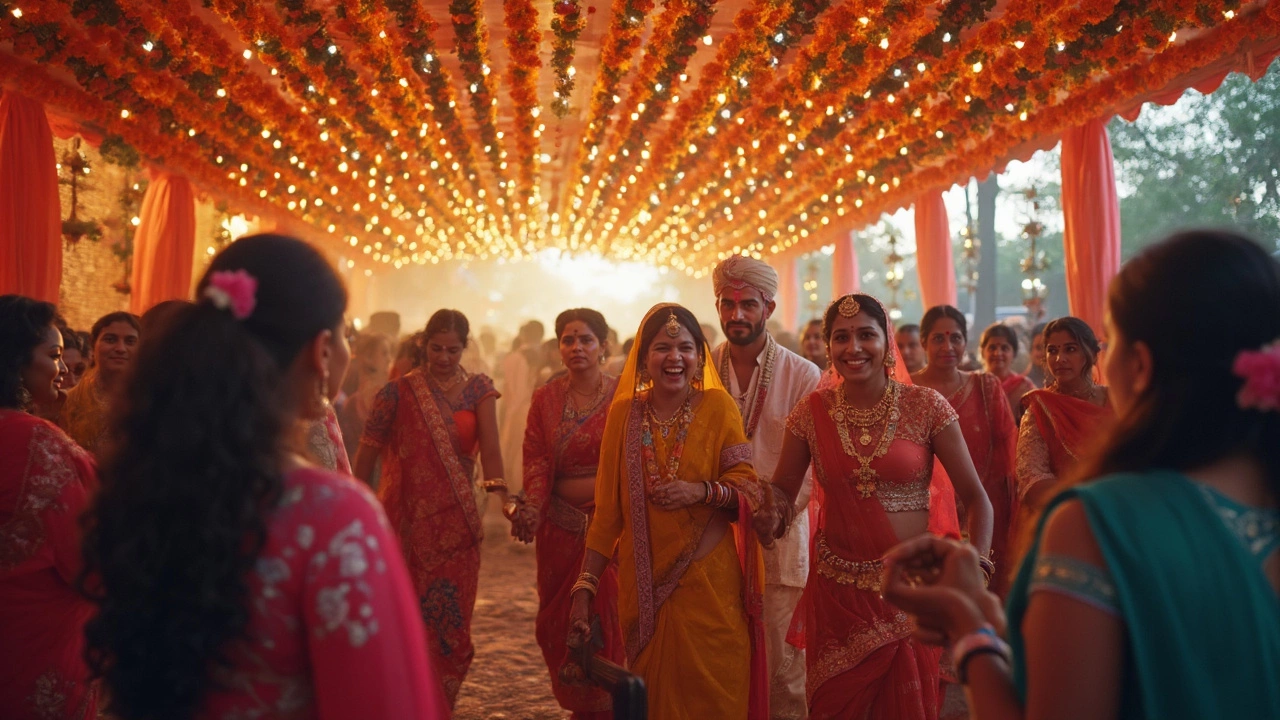
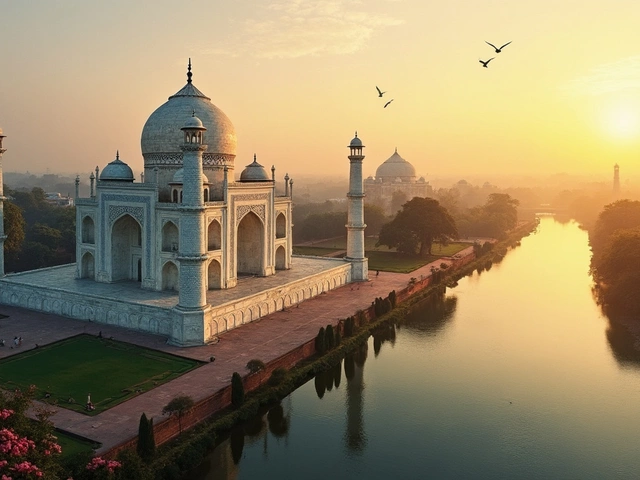

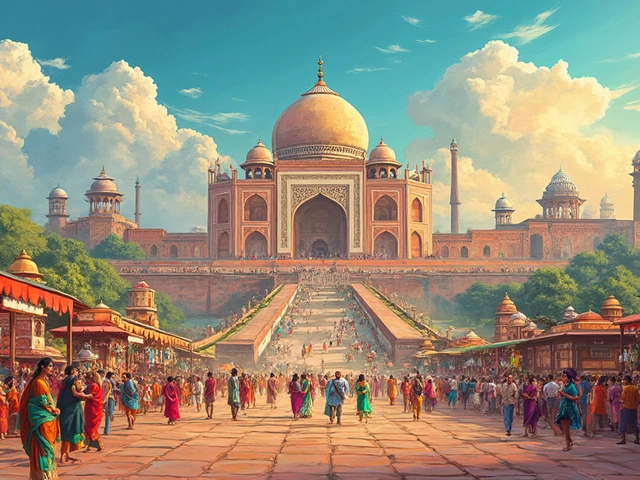
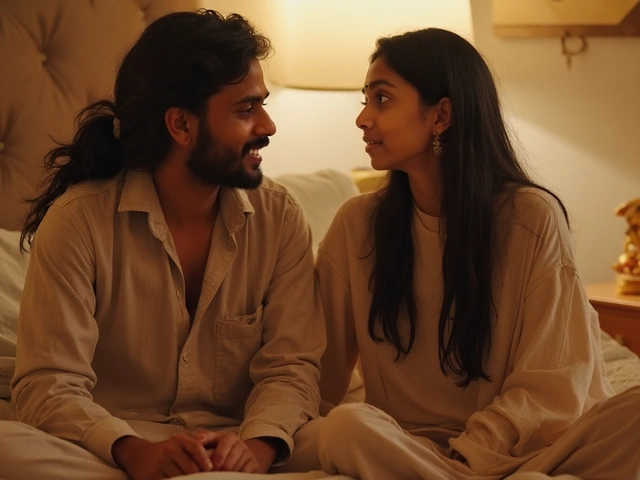
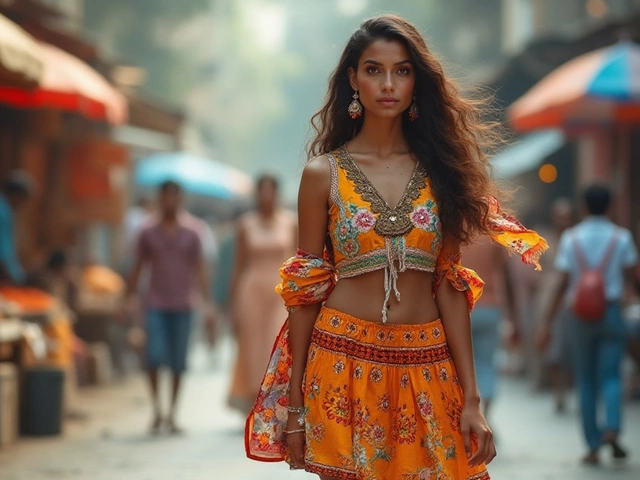
Write a comment